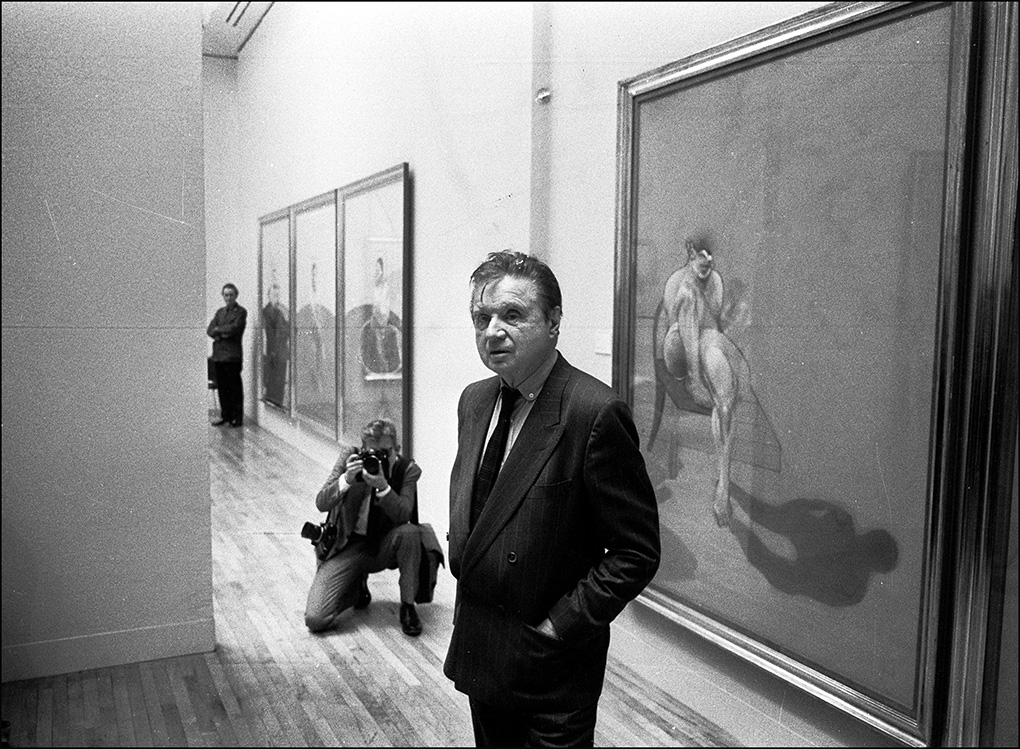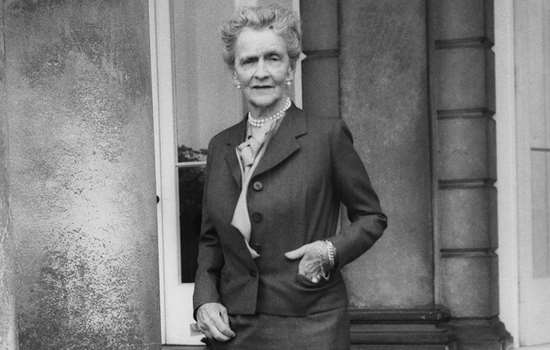
Blue Plaques Quiz (Part Two)
Test your knowledge of the blue plaques scheme with our 20 questions quiz. If you haven’t already, go back to our original blue plaques quiz after you’ve completed this one.
-
1 Around how many plaques are part of the London blue plaques scheme? A 2,000 B 950 C 500
Answer: 950
We usually install 12 new plaques each year. All new plaques are based on public nominations, of which we receive 80 to 100 a year. A panel of academics and practitioners then chooses a shortlist.
-
2 To whom is the oldest surviving plaque dedicated?
Answer: Napoleon III
The plaque was erected in 1867 by the Society of Arts at 1c King Street, St James's. Napoleon III was the nephew and heir of Napoleon I and the last emperor of the French.
-
3 Which was the first body to run the scheme when it launched?
Answer: The Society of Arts (later the Royal Society of Arts)
The scheme was founded in 1866 and is the oldest scheme of its kind in the world. The first two plaques were erected in 1867 – to Lord Byron, in a Cavendish Square (this house was demolished in 1889), and to Napoleon III.
-
4 Which writer has a plaque at 29 Fitzroy Square, Fitzrovia, where she lived from 1907 to 1911?
Answer: Virginia Woolf
Woolf took on a five-year lease at the property with her brother Adrian in August 1907. She occupied the whole of the second floor and while here wrote articles for newspapers and began her first novel, The Voyage Out, which was published in 1915. There is also a plaque to George Bernard Shaw at the same address.
-
5 The scheme came about after which MP suggested the idea in the House of Commons?
Answer: William Ewart
The idea of a commemorative plaque scheme was first put to the House of Commons by William Ewart MP in 1863. Ewart himself was subsequently the recipient of two plaques, in Belgravia and Hampton.
-
6 In which year were the first plaques installed as part of the scheme? A 1867 B 1887 C 1907
Answer: 1867
In the 35 years that the Society of Arts managed the scheme, it put up 35 plaques. Fewer than half of these survive, including those to John Keats, William Makepeace Thackeray and Edmund Burke.
-
7 When did English Heritage take over the scheme?
Answer: 1986
Before this, the scheme had been managed by the Greater London Council (GLC) between 1966 and 1985, when the GLC was abolished. During this time it put up 262 plaques, commemorating figures such as Sylvia Pankhurst, campaigner for women's rights, Samuel Coleridge-Taylor, composer of The Song of Hiawatha, and Mary Seacole, the Jamaican nurse and heroine of the Crimean War.
-
8 How many years must have passed since a candidate's death for them to be eligible for a blue plaque?
Answer: 20 years
Candidates must fulfil a number of criteria to be eligible for a plaque. At least 20 years must have passed since a candidate’s death, at least one building associated with the figure must survive within Greater London, the building must survive in a form that the commemorated person would have recognised and it must be visible from a public highway.
-
9 What is the significance of Johnston Sans, a font designed by Edward Johnston, who has a plaque in Chiswick?
Answer: It was the font used on signs on the London Underground
A version of the font, which Johnston completed in 1916 and drew by hand, is still used on the Underground today. Johnston also designed the iconic London Underground roundel.

-
10 What is the record for the most plaques held by a single person as part of the scheme?
Answer: Three
The prime ministers Lord Palmerston and William Gladstone each have three surviving plaques, as does the author William Makepeace Thackeray. In recent years the rule has been only one plaque per person.
-
11 What is the musical significance of numbers 23 and 25 Brook Street?
Answer: The adjacent addresses were home to Jimi Hendrix (number 23) and George Frideric Handel (number 25), both of whom have blue plaques.
When asked about living next to Handel's old home, Hendrix is reported to have said, ‘To tell you the God's honest truth, I haven’t heard much of the fella's stuff.’
-
12 Can you identify this tennis player, who has a plaque in East Sheen?
Answer: Kitty Godfree
The plaque to Kathleen 'Kitty' Godfree is at 55 York Avenue, East Sheen, where she lived from 1936 to 1992. She won Wimbledon twice (in 1924 and 1926) and won five medals over two Olympic Games. This record for the most number of Olympic medals won in tennis was only recently equalled by Venus Williams.

-
13 In which decade did Vincent Van Gogh live at 87 Hackford Road, South Lambeth, where a plaque has been installed?
Answer: 1870s
Van Gogh visited London as a young man in 1873–75 and stayed at 87 Hackford Road in 1873–74. He returned to England in 1876 and, for a time, taught arithmetic, dictation and languages at a school in Ramsgate.

-
14 Which footballer, who has a plaque in Stroud Green, was the first black footballer to play for England in a competitive match?
Answer: Laurie Cunningham
Footballer Laurie Cunningham (1956–89) was a talented forward player who enjoyed success with Leyton Orient, West Bromwich Albion and Real Madrid. In 1979 he became the first black player to represent England in a competitive international match.

-
15 The blue roundel that we recognise today was originally designed by a student in 1938. How much were they paid for the design?
Answer: Four guineas
When London County Council ran the scheme, it experimented with different colours and decorative schemes but, by 1921, blue ceramic plaques had become standard. In 1938 the modern, simplified blue plaque was designed by an unnamed student at the Central School of Arts and Crafts, who was paid just four guineas.

-
16 Entertainer Gracie Fields, who has a plaque in Islington, signed a contract in 1937 with 20th Century Fox for how much?
Answer: £200,000
Dame Gracie Fields was a highly successful singer, comedian and actress. While living at 72a Upper Street in Islington in the 1920s she performed in London almost continuously and consolidated her reputation as one of the era’s greatest stars. By the 1930s she was the biggest star in British cinema. When she signed her contract with 20th Century Fox it was billed ‘as the highest salary ever paid to a human being’.

-
17 How many plaques that are part of the scheme are there in the City of London?
Answer: One
The terracotta plaque, commemorating Dr Samuel Johnson, was put up in 1876 by the Society of Arts in Gough Square, near Fleet Street. Three years after it was erected it was agreed that the Corporation of the City of London would take responsibility for commemorating historic sites within its ‘square mile’ and this agreement has stood ever since.

-
18 Which painter has a plaque at 7 Reece Mews, South Kensington, where he lived and worked from 1961 to 1992?
Answer: Francis Bacon
Bacon is commemorated with a blue plaque at his former home and studio. He worked here for more than 30 years and it was here he produced some of his most important later works. After his death, Bacon's studio and its entire contents were relocated to the Hugh Lane Gallery in Dublin.

-
19 Whose plaque, which was first erected in 1937 in Chalk Farm, was repeatedly vandalised?
Answer: Karl Marx
The first plaque to Marx was erected at 41 Maitland Park Road, his home from 1875. However, the plaque and its replacement were both vandalised soon after installation, and the owner of the house declined a third. The house was later demolished, and attention turned to 28 Dean Street, where Marx lived from 1851 until 1856. A new plaque was unveiled here in 1967.
-
20 Bob Marley was honoured with a blue plaque in 2019. Which album did he record with The Wailers while living in London?
Answer: Exodus
Marley is commemorated with a blue plaque at 42 Oakley Street in Chelsea, where he lived in 1977. It was while living here that he and The Wailers finished recording their iconic album Exodus.



